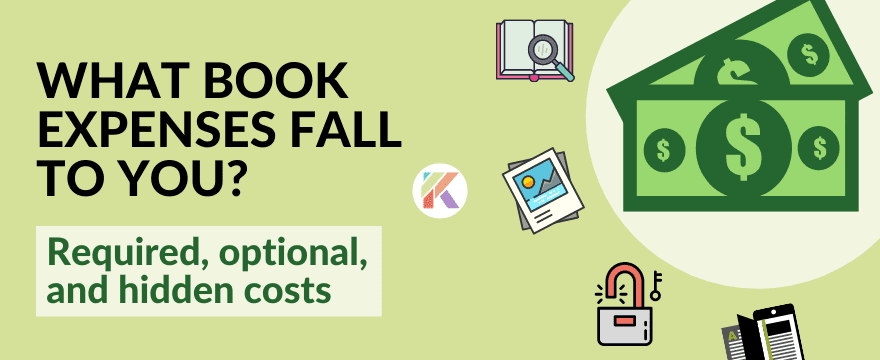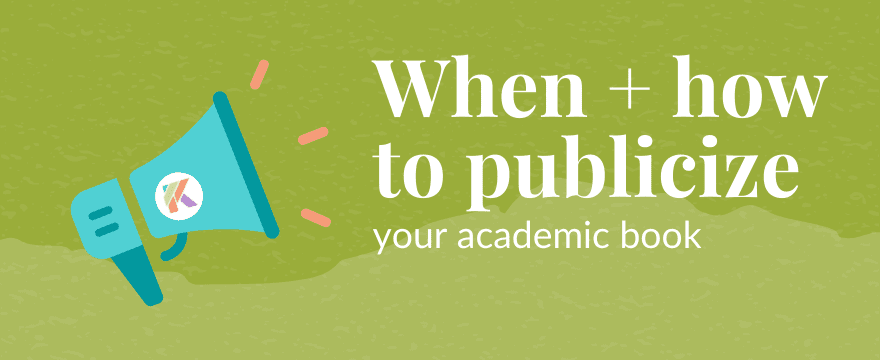You probably don’t expect to make much from royalties on the publication of your first academic book. But did you know that several hidden costs associated with your book are your responsibility (and not your press’s)? And, depending on your project’s parameters, these expenses can total in the thousands of dollars!
In this post, I first outline what expenses are your responsibility. Then, I tell you the three things that, while not required, you might want to seek funding for.
Expenses You or Your Institution Must Cover (when applicable)
If You Want to Include Images or Other Copyrighted Materials
Several costs associated with each image you want to publish in your book fall to you.
- Copyright fees (if applicable). These can be prohibitively expensive if the work or artist is famous. Start this process early.
- Fees to commission high-resolution scans or photos.
- Fees to publish said high-resolution scans or photos in your book.
For more on obtaining permissions, using images, and copyright (including a sample copyright permission letter, a sample use permission letter, and a sample permissions log and summary), see Susan M. Bielstein’s Permissions, A Survival Guide.
Additionally, many presses will agree to publish a limited number of black-and-white images. But, if you hope to include a lot of images (10+) or color images, the press might ask for a “subvention” to help offset the printing costs. Since subventions can run several thousand dollars, this is something you would want to seek institutional funding for.
If Your Press Requires A Subvention (typical of Canadian university presses)
Not all books will sell enough copies to break even, financially. In fact, the 2009 essay “Canada: Reflections on university press publishing” by Bill Harnum reports that “the average monetary loss from publication of a scholarly book is in the range of $10,000 to $12,000”!
Most presses are non-profits and seek to further academic conversations, but presses must keep financial considerations (audience potential, costs associated with the book) in mind when selecting projects.
Some presses–usually Canadian university presses–operate on smaller budgets and always require what’s called a “subvention” to publish a book. (Subventions with reputable university presses are different from pay-to-publish schemes at vanity presses.) In Canada, subventions of around $8,000 are usually expected. While there are publication grants authors can apply for, many are only open to Canadians.
US-based university presses don’t typically require a subvention for straightforward monographs. In cases when the market is projected to be very small or the book’s costs high (like if you hope to include a lot of color images), the project might not be economically feasible for a press without a subvention.
If Your Book Must be Open Access
In certain situations–like for the UK’s REF or as a grant requirement–a book must be published in open access. Because open access publication means that a press has few opportunities to recoup the costs associated with publication, the press might require a subvention to offset the cost of open access publication.
Optional Expenses for which You Might Want to Seek Funding
A Book Workshop
During a “book workshop,” you invite several external established scholars in your field(s) to read and offer developmental suggestions on the book manuscript before you submit it to a university press. Typically, the scholars travel to your campus and spend an entire day discussing your manuscript-in-progress.
Expenses associated with book workshops include the scholars’ travel expenses and honoraria. As one data point, the Center for International Social Science Research at the University of Chicago offers book workshop grants allowing its faculty to invite up to four guests with $500 per honorarium.
Indexing
Preparing the index is your (the author’s) responsibility. Here, you have two broad choices: prepare the index yourself or hire a professional indexer to prepare it. If you choose the latter, you are responsible for the associated expenses.
Depending on rate and timeline, having an index prepared professionally can cost several thousand dollars.
(Laura Portwood-Stacer also outlines several costs, including Indexing, you might be responsible for in The Book Proposal Book, Chapter 14, and in this post on author costs.)
Initial Release in Paperback
As outlined above, university presses cannot completely neglect financial considerations when selecting projects. One way some presses seek to recoup costs is by automatically publishing their books exclusively in hardback, with a higher list price, first. A book would only go to a more affordable paperback version once it sells a certain number of copies.
Hardback books, though, can be prohibitively expensive for individual scholars. So, if you are working with a press that publishes books in hardback first and you want your book to be accessible to individuals (and not just libraries), you can ask your editor what subvention might make a paperback initial release possible.


